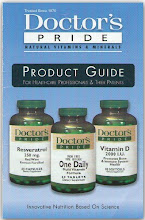One common injury caused by a variety of traumas, often incurred during our younger days, but only becoming a real nagging problem as we age like shriveling fruit on the shelf of the kitchen in the one-room, low-rent sweatbox apartment we call home, is a tear of the glenoid labrum. This piece of cartilage serves to guide the head of the humerus bone (upper arm) as it rotates and moves in the glenoid fossa (a dish-like depression of the scapula (shoulder blade)) that holds the upper arm in place. Here's the anatomy of the shoulder, labrum included, to give you an idea of where this little bitch is located:
There it is. The problem is, when this mother tears, the shoulder becomes much less stable, and you start to have ongoing shoulder pain and discomfort, not to mention instability in sports and other activities, which sucks. The problem itself makes itself worse over time, as the labrum tears more and degenerates from increasing instability.
Although notoriously hard to diagnose, those three people left in the country with good medical insurance can go see their specialist for tests like arthroscopic exploratory surgery and MRI's to name a few options, us other poor bastards are going to have to depend on self-diagnosis and physical clues like:
- A sharp "pop" or catching sensation in the shoulder during certain extreme arm movements
- A vague aching sensation in the shoulder joint
- Your shoulder tends to slip out of joint slightly, usually forward, or crack back into joint often
- First, make sure you reduce pain and inflammation, if any, using DMSO, found at your local health food store, MSM supplements, and any medical anti-inflammatories you may have access to.
- Once the pain subsides, see a chiropractor to make sure the shoulder glenohumeral joint is properly lined up and articulating normally. He should be able to pop it back into alignment if necessary.
- To complete the rehab process, do codman's exercises, below:
I did this one regularly with a 45 lb plate in my hand, and had a miracle improvement in reduction of chronic shoulder pain after two years of fruitless other attempts to fix it.
This one looks a little stupid. Do it if the other two don't work.
This one I just substituted the lat pulldown machine at the gym, with about 200 lbs of weight, and it worked great!
All exercises should be repeated 30 times. Two sessions per day are recommended.
When the pain is completely gone, it is now time to increase the stability of the shoulder by paying special attention to doing rotator-cuff exercises. Start with light weight (3-5 lbs for women): (do these at the end of your regular workout)
Rotator Cuff Exercises (Wikipedia)
Rotator cuff exercise #1 Empty Your Beer
Stand normally, arms at your sides, with a dumbbell in each hand. As you begin to raise your arms out to the sides, and slightly forward of the center of your body (in line with how your shoulder blade moves along your rib cage), turn your thumbs downward, like you're emptying a glass. Move your arms up to horizontal, keeping them straight or slightly bent at the elbows. Arms back to sides. Do 12 to 15 reps x 3 or 4 sets.
Rotator cuff exercise #2 Propped External Rotation
Prop your elbow out to your side at horizontal, resting on a chair-back, or other immovable object. Place a dumbbell in that hand with the other. Holding your forearm vertically, lower the weight slowly forward as your arm rotates counterclockwise in the joint (right arm, clockwise left arm) and the weight lowers toward the point where your arm is past horizontal. Feel the stretch at the bottom limit of motion, and raise the weight back up to vertical. 10 to 12 reps x 3 or 4 sets.
Rotator cuff exercise #3 Side-Lying External Rotation
Lay on your side with your high elbow at your side, holding a dumbbell with your forearm across your stomach. Lift the weight up moving your forearm to above horizontal, return to the lower position. Do 12-15 reps x 3 to 4 sets.
Rotator cuff exercise #4 Arm Wrestler
This muscle (subscapularis) is not as crucial for shoulder health, as it usually has already outpaced the other 3 rotator cuff muscles (teres minor, supraspinatus, infraspinatus), but it's probably good to work it some for prevention. This is your "arm-wrestling muscle", and since it doesn't stick out and make you look good at the pub, most posers aren't even aware that it exists.
To work this muscle, lie on your back and roll slightly towards the same side arm, and stick your elbow against your ribcage. Placing a dumbbell in that hand, start from horizontal (forearm pos.) and raise it to vertical. Do 10 to 12 reps x 3 or 4 sets.








